More than 10 years ago, the Government of The Bahamas committed to protecting and effectively managing 20% of our marine environment by 2020 to ensure a healthy marine environment and sustain livelihoods in fisheries and tourism. With this deadline less than one year away, 10% of the country’s nearshore environment has been set aside in protected areas, placing The Bahamas at the halfway mark.
As our country tackles the ongoing challenges of foreign poaching, stretched law enforcement capacity at sea, declining conch stocks, and the international downgrade of the Nassau grouper to critically endangered status, a well-managed and designed network of marine protected areas provide a viable solution to address these issues.
“We have a great opportunity right now to safeguard our environment for future generations,” said Shenique Albury-Smith, Bahamas Program Director for The Nature Conservancy. “We are all concerned about the decline in our marine resources, so we proposed a solution to the problem because we care about our country and our heritage.”
Marine Protection Plan Presented to Government: L-R: Karen Panton Executive Director of Bahamas Protected Areas Fund, Lakeshia Anderson Director of Parks Bahamas National Trust (BNT), Casuarina McKinney-Lambert Executive Director of Bahamas Reef Environment Educational Foundation (BREEF), Minister of the Environment and Housing Romauld Ferreira, Lynn Gape Deputy Executive Director Bahamas National Trust (BNT), Patricia Minnis Office of the Spouse, Janet Johnson President of Bahamas National Trust, Minister of Agriculture and Marine Resources Michael Pintard, Shenique Albury-Smith Bahamas Director at The Nature Conservancy, Opposition Leader Philip Davis, Eleanor Philips Director at The Nature Conservancy, Eric Carey Executive Director Bahamas National Trust (BNT)
During the September 2018 submission of the Bahamas Protected Marine Protection Plan, Minister of the Environment and Housing, Hon. Romauld Ferreira restated the government’s commitment to the 20% protection goal. Bahamas Protected is now encouraging the government to declare and legally establish the full list of proposed areas as MPAs as 2020 draws near.
Until this time, partners will continue to work alongside key government agencies to provide information and technical support. Once the new MPAs are declared, work can begin again with communities to determine the best way to effectively manage these areas for the benefit of people and nature.
In 2016, The Nature Conservancy (TNC), the Bahamas National Trust (BNT), and Bahamas Reef Environment Educational Foundation (BREEF) joined forces with relevant government agencies and numerous other stakeholders under the Bahamas Protected project.
Science team surveying a coral reef
To help our country achieve its 2020 goal, the Bahamas Protected science team examined previous research that was done in numerous local marine environments to determine where the country was still short of its national conservation targets for protecting key species and important areas. This data was combined with additional research, local knowledge and community input to identify priority areas for inclusion in the Bahamas National Protected Area System and reach conservation targets for key marine features.
“By identifying and actively protecting key features such as fish spawning sites, and areas where adult conch are reproducing, this will not only ensure rich biodiversity in these waters, but increase their spillover into fished areas will help protect the livelihood of fishermen for many generations,” said Casuarina McKinney-Lambert, Executive Director for BREEF.
South Andros Community Meeting
The culmination of work by the partnering organizations was the submission of the Marine Protection Plan (MPP) to the government, identifying a suite of areas around the country that would create the most effective network of protection and enable the country to meet its 2020 goal. An online support petition was also submitted and to date has generated more than 11,000 signatures in support of marine protection, with more than 10,000 of those signatures coming from Bahamians.
“We didn’t operate in a vacuum. We went into communities to find out what areas they thought were important to help guide our planning,” said Lashanti Jupp, Conservation Planner for the Bahamas National Trust, “We’re connected by water, not separated. So we need to ensure that everyone benefits from the areas being proposed.”
Follow the Bahamas Protected Facebook page for more information (@242protected), and sign and share the petition if you want to get involved in protecting The Bahamas for today and the future.


